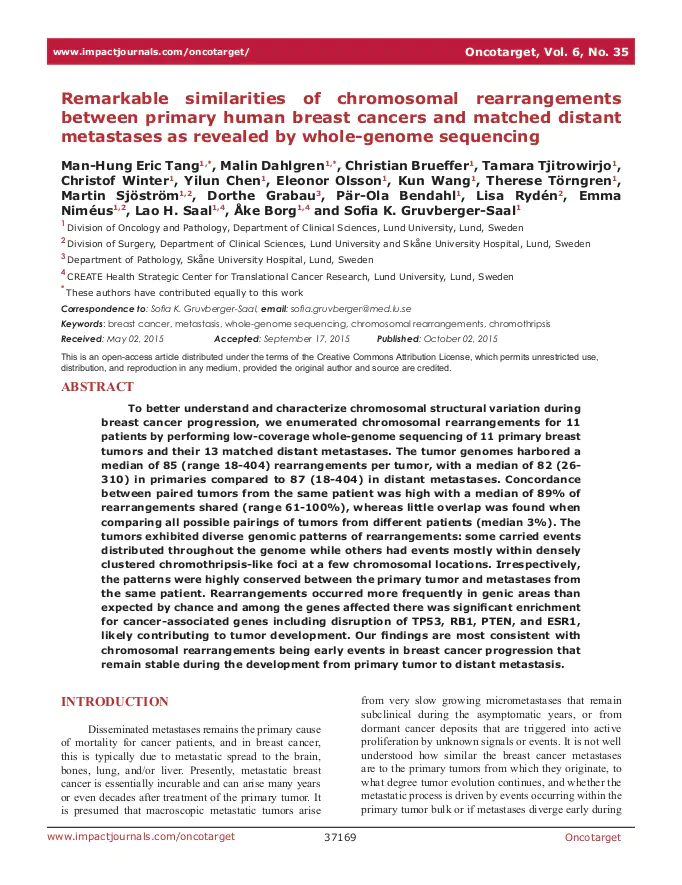Remarkable similarities of chromosomal rearrangements between primary human breast cancers and matched distant metastases as revealed by whole-genome sequencing

Abstract
To better understand and characterize chromosomal structural variation during breast cancer progression, we enumerated chromosomal rearrangements for 11 patients by performing low-coverage whole-genome sequencing of 11 primary breast tumors and their 13 matched distant metastases. The tumor genomes harbored a median of 85 (range 18-404) rearrangements per tumor, with a median of 82 (26-310) in primaries compared to 87 (18-404) in distant metastases. Concordance between paired tumors from the same patient was high with a median of 89% of rearrangements shared (range 61-100%), whereas little overlap was found when comparing all possible pairings of tumors from different patients (median 3%). The tumors exhibited diverse genomic patterns of rearrangements: some carried events distributed throughout the genome while others had events mostly within densely clustered chromothripsis-like foci at a few chromosomal locations. Irrespectively, the patterns were highly conserved between the primary tumor and metastases from the same patient. Rearrangements occurred more frequently in genic areas than expected by chance and among the genes affected there was significant enrichment for cancer-associated genes including disruption of TP53, RB1, PTEN, and ESR1, likely contributing to tumor development. Our findings are most consistent with chromosomal rearrangements being early events in breast cancer progression that remain stable during the development from primary tumor to distant metastasis.